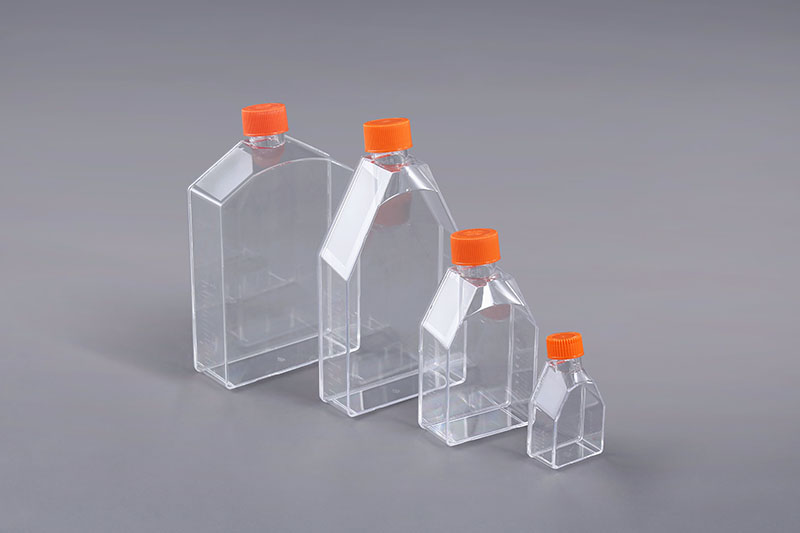As one of the commonly used consumables for cell culture, cell culture flasks play a vital role in the growth and reproduction of cells. At present, the cell culture bottles on the market are mainly made of glass or plastic materials. This kind of consumables is different from ordinary medical plastic bottles, and the price is relatively high. Can this kind of bottles be reused?
If you use a glass cell culture flask, you can soak in clean water for more than 30 minutes, add a little cleaning agent, wash with ultrasonic for more than 30 minutes, remove and dry, and then soak in chromic acid lotion for 6-18 hours, then rinse with tap water 10-15 times, rinse with double distilled water 3-4 times, dry, and autoclave before using again.
Most of the current cell culture flasks are made of plastic materials, and most of them are disposable and can pass several generations of cells at most. But cells are more sensitive to the environment. If they are reused too many times, the substances secreted by cell growth and the residual substances of dead cells will remain in the bottle and affect the growth of new cells. In addition, the cell culture flasks have factors that promote cell adhesion and growth. With more passages, these factors will grow slowly. Therefore, it depends on the cell growth status. Generally, 2-3 generations are OK. 3 It is recommended to replace it after generation.
On the whole, in order to grow well, cell culture flasks are not recommended to be reused. Compared with the culture medium and serum used for culturing cells, the cost of consumables is not worth mentioning. Of course, whether the cells can reproduce normally depends not only on the new and old cell culture bottles, but also on whether you pay attention to aseptic operation. If the operation process is improper, even the best bottles will affect cell growth.
The FAI climbed 5.9 percent year-on-year in the first 11 months of 2018, quickening from the 5.7-percent growth in Jan-Oct, the National Bureau of Statistics (NBS) said Friday in an online statement.
The key indicator of investment, dubbed a major growth driver, hit the bottom in August and has since started to rebound steadily.
In the face of emerging economic challenges home and abroad, China has stepped up efforts to stabilize investment, in particular rolling out measures to motivate private investors and channel funds into infrastructure.
Friday's data showed private investment, accounting for more than 60 percent of the total FAI, expanded by a brisk 8.7 percent.
NBS spokesperson Mao Shengyong said funds into weak economic links registered rapid increases as investment in environmental protection and agriculture jumped 42 percent and 12.5 percent respectively, much faster than the average.
In breakdown, investment in high-tech and equipment manufacturing remained vigorous with 16.1-percent and 11.6-percent increases respectively in the first 11 months. Infrastructure investment gained 3.7 percent, staying flat. Investment in property development rose 9.7 percent, also unchanged.
 English
English



















































